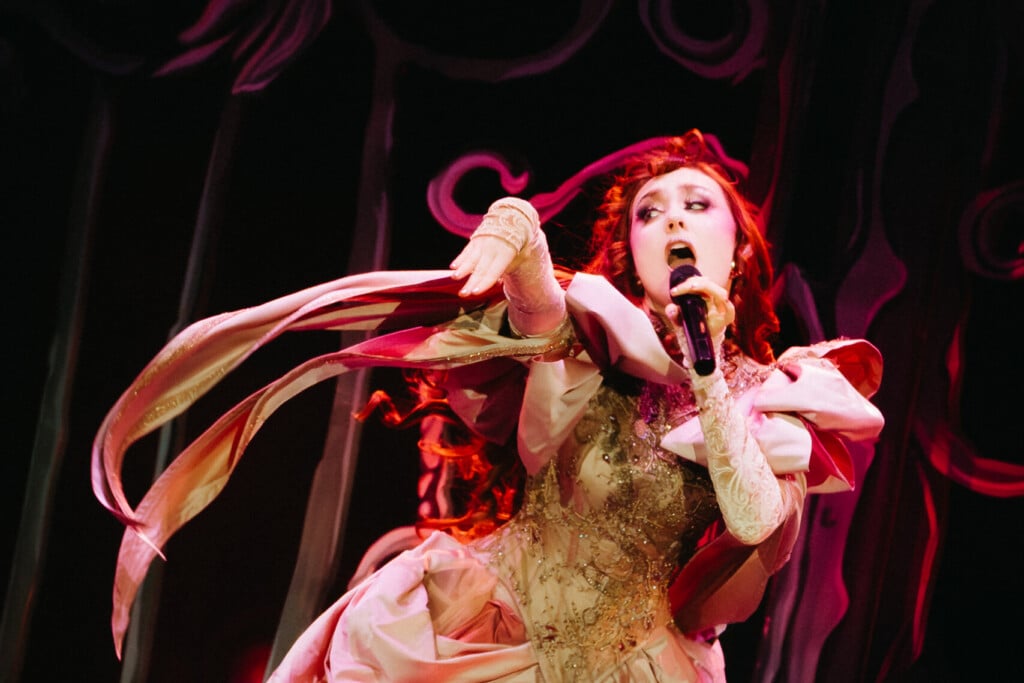The KC Ballet’s Dracula is bloody convincing


Say what you will about our cultural obsession with vampires, it hasn’t bled us completely dry. The Kansas City Ballet finds fresh marrow in the blood-soaked myth with its production of Michael Pink’s Dracula, a charged meeting of classic ballet and rich theatricality.
The cast rotates with each performance, but opening night featured in the title role a hypnotic Anthony Krutzkamp. He luxuriates in the part, showing us a master vampire equal parts dignity and disdain as he pads somberly across the stage and whirls his cloak like a flamenco dancer.
Pink’s rolling choreography crafts snake pits of slippery bodies and erotic pairings that descend into the grotesque, and the technical elements are up to the blend of romance and darkness. David Grill’s moody lights allow Dracula to slink like a specter from the shadows, catching us off guard with each appearance. Production designer Lez Brotherston makes smart use of the scrim to create subtle silhouettes and to mask intricate set pieces as they fly in. The sumptuous, multistory sets are exquisite models of cold stone and coiling metal, textured with fabric that drapes and pools sensually onstage.
And there’s much sensuality on display. Bram Stoker’s novel drips with as much homoeroticism as horror, and Pink’s adaptation captures those undertones. (A sign briefly onstage in Act I that announces Oscar Wilde’s release — the author had been imprisoned for sodomy and “gross indecency” a few years prior to Dracula‘s publication — sharpens the stake a bit.) A dreamy pas de deux between Dracula and the unwitting Jonathan Harker (danced last Friday by Ryan Jolicoeur-Nye) is a highlight, at once a power play and a seduction. In one breathtaking sequence, Dracula rolls his groin along Harker’s shivering spine in a fluid, controlled motion. The lifts are subtle and unhurried, exhibiting Krutzkamp’s enormous strength as he appears to manipulate Harker like a rag doll.
Dracula requires good actors as well as dancers, and Laura Hunt is among the finest as the vivacious Lucy Westenra. She captures Lucy’s girlish energy in an expressive and spirited performance, demonstrating her range after Dracula’s influence transforms her into a snarling, frenzied creature of the night. Molly Wagner creates elegant lines and meltingly soft postures as the count’s reluctant conquest Mina Harker, though her performance can feel a bit cool. James Jordan, the company ballet master, is precise and powerful as Van Helsing, and the supporting company members are no less skilled. (Yoshiya Sakurai is exuberant as a wriggly bell boy at the Grand Hotel.)
Philip Feeney’s original score buoys the dancers with a lush orchestral backdrop, with haunting, ethereal choruses pushing through serpentine trombone slides and staccato strings. Pulsing timpani and reedy clarinets offer subtle accompaniment for the production’s intimate duets.
Pink’s adaptation follows Stoker’s novel closely, though some plot points seem muddled. The sanatorium scenes play out less coherently here, though Ian Poulis dances the lunatic Renfield with appropriate abandon. Ballet seems like a natural medium for this famous tale, bringing subtext to life in dances that expose the vampire’s chilling, magnetic allure. Our familiarity with the myth may have desensitized us to its horror, but the Kansas City Ballet’s potent production proves that Dracula still has the power to surprise us.




